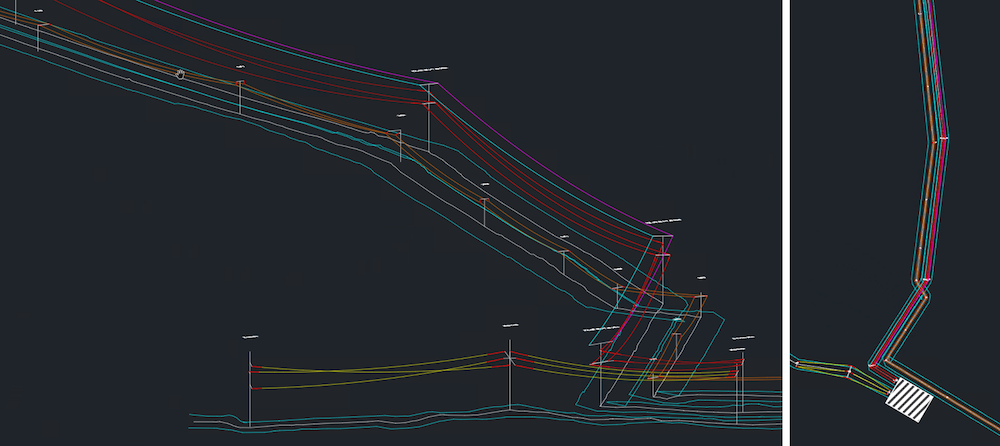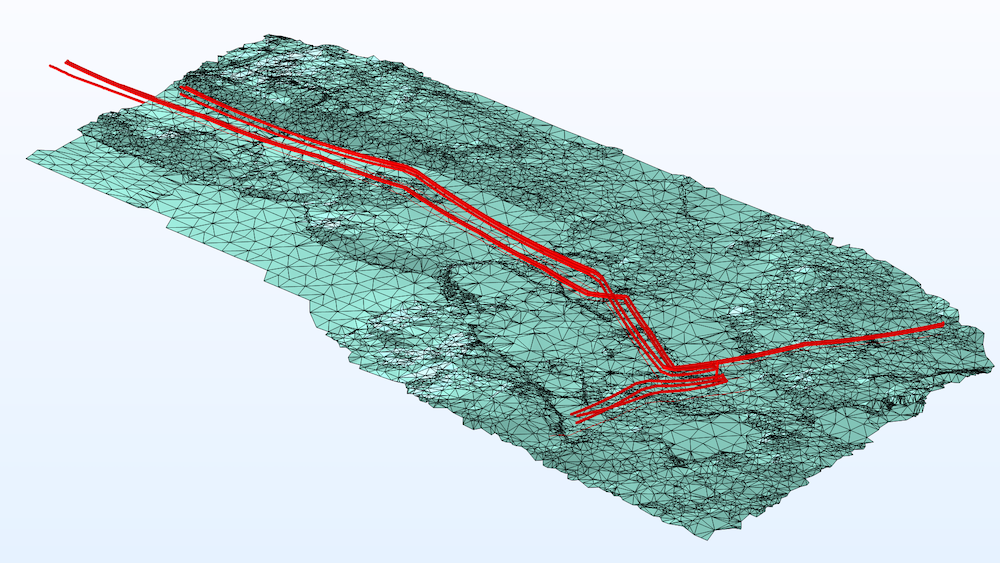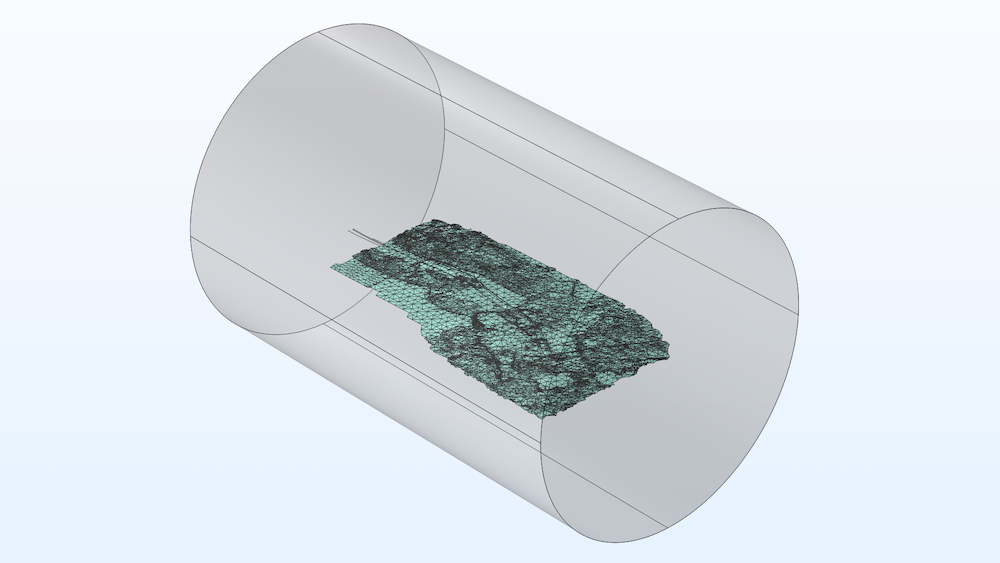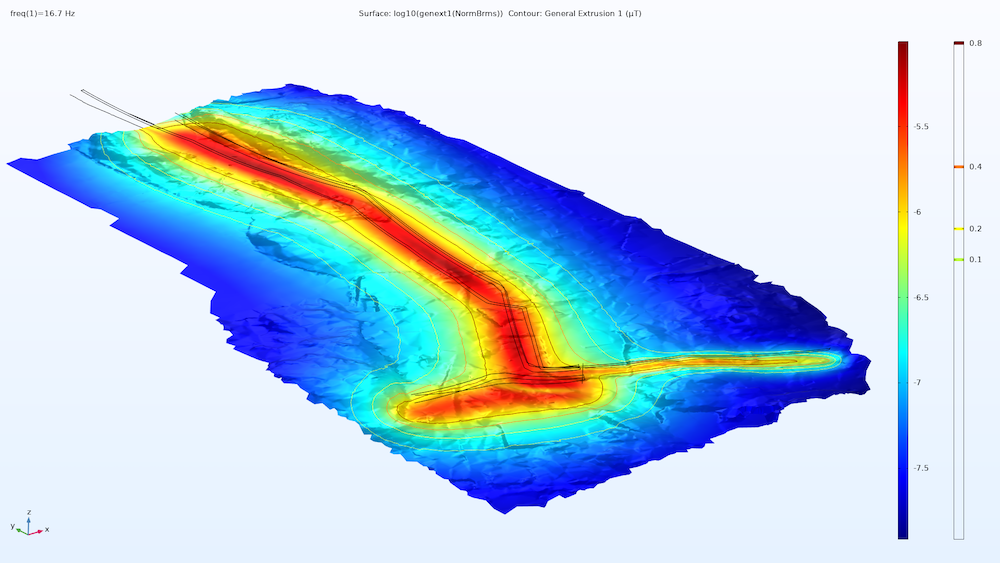
Protection against radiation is critical for providing the general public with a healthy living environment. Around the world, there are rules and regulations in place to ensure that magnetic field exposure stays within acceptable limits. However, the definition of these acceptable limits is up for debate and has kept scientists busy for decades. Numerical simulation plays a crucial role in the process of designing this electric infrastructure — and even providing legislation for it.
Studying Low-Level Exposure to Magnetic Fields
Exposure to magnetic fields is not a new phenomenon; in fact, it has been studied and debated for decades. How exactly do magnetic fields affect us?
As the World Health Organization (WHO) said in a 2016 report, “Low-frequency electric fields influence the human body just as they influence any other material made up of charged particles.” Simply put, electric fields cause circulating currents within the body, and the strength of these currents is dependent on the strength of the magnetic fields outside the body.

How do magnetic fields from power transmission lines affect nearby people? Image via Unsplash.
Extremely large currents could, in effect, stimulate our nerves or muscles, or even cause heat generation. So far, though, scientists haven’t found proof that the low-level fields generated by systems that operate within the required margins are harmful.
Even though there is minimal risk of harm, standards are in place to ensure that the induced currents within the human body do not cause negative effects. High current density in the human body can, for example, cause the following problems:
| Range (in mA/m2) | Effect |
|---|---|
| 10–20 | Flashing lights (phosphines) in the corners of the eyes |
| 10–100 | Affects brain function |
| 1000 | Seriously affects heart function |
In terms of exposure to magnetic fields, organizations like the International Commission on Nonionizing Radiation Protection (ICNIRP) consider 0.2–0.4 μT as normal levels of exposure, like what you’d find in your home or office, while field intensities closer to 100 μT are elevated levels. What happens with long-term exposure to these levels, whether at the normal level, elevated, or somewhere in between?
Everything from pregnancy complications and depression to cataracts and headaches have been studied as risks of prolonged exposure to electromagnetic fields. Research from the 1970s claimed that childhood leukemia can develop at low levels of exposure, but further studies proved these results inconclusive. Since then, there have been numerous studies on how low-level exposure to magnetic fields can affect our health.
Because of the limited research conclusion, accepted standards for magnetic field exposure lack hard numerical limits. The standards put in place instead act as a precaution, for which governments (local, state, national) and project stakeholders, like building developers, should adhere.
A Special Case in Sweden
In Sweden, the authorities have become more and more aware of low-level electromagnetic field exposure and have started to addressed the matter more frequently in the past 20 years. The Swedish Radiation Safety Authority has made the following recommendations in response to the worries and risks:
- Place new power lines and electrical installations so that exposure to magnetic fields is limited
- Avoid placing new homes and schools near electrical installations with elevated magnetic fields
- Limit fields that strongly deviate from what can be considered normal in homes, schools, preschools, and offices
- Implement these measures at reasonable costs
In response to these recommendations, building developers need to assess magnetic field exposure levels at planned project sites in order to get the required permits. To do so, they often turn to companies like Sweco.
Sweco, one of the largest technical consultants in Sweden and Europe, is heavily involved in projects assessing magnetic field exposure. Gustav Holmquist, a former project manager in the energy department at Sweco, worked on a particular project in which a contractor wanted to build a structure close to several power transmission lines operating at 400 kV/50 Hz with a parallel railway transmission line operating at 16.7 Hz.

Simple wire model of the two parallel transmission lines. Images courtesy Sweco.
Sweco’s client wanted to know: “What is the impact of the transmission lines in parallel with different frequencies?” Sweco not only wanted to answer the client’s question, but help them visualize and understand the results. To do so, they turned to electromagnetics modeling…
Using Simulation to Investigate Magnetic Field Exposure
Both the power and railway transmission line designs were imported in a CAD program. To analyze the low-frequency magnetic fields of the parallel transmission lines, Holmquist modeled both transmission lines at different frequencies in 3D in the COMSOL Multiphysics® software. It was important to capture the height and suspension of the power line cables in 3D.
Holmquist also imported a 3D topology of the entire area into the model. This way, he could see the effect of the different frequencies, how they interact with each other, and how the topology of the area affects the magnetic fields. “Normally, calculations are done on a fixed level below the transmission line,” said Holmquist. “Including the topology in the model gives a more accurate response.”


The 3D model of the transmission lines and surrounding topology and modeling domain. Images courtesy Sweco.
Including the topology made the model quite large: Not only was the topology complex but the area itself was over one kilometer long and half a kilometer wide. Still, the model needed to accurately compute the frequency domain at each of the many connected points. Using the Assembly feature in COMSOL Multiphysics, Holmquist was able to reduce the 4.5 million domain elements to 0.5 million.
After performing several studies at different frequencies, Holmquist used the General Extrusion feature to map the solution from the frequency-domain studies onto the topology map. This way, he could show the clients exactly how the magnetic fields of the two transmission lines interact with each other, and how the topology of the surrounding area would affect the magnetic field exposure to humans nearby.

Magnetic field exposure along the transmission lines. Image courtesy Sweco.
Many Possibilities
The benefits of simulation for this type of project became obvious to Holmquist after showing the results to the customer. “The client was quite interested in how we had performed the analysis,” said Holmquist. “They had not seen magnetic fields computed with this level of detail, only analytical functions, which become inaccurate for nonideal cases.” He valued the postprocessing capabilities of the COMSOL® software as a powerful way to show clients the results of their analyses.
Holmquist sees many possibilities for using simulation in the field of power and energy. “We can continue analyses in areas with high exposure to investigate magnetic field reduction techniques like shielding,” said Holmquist.
By researching exposure levels to the electromagnetic fields around us, whether that exposure is at negligible or unsafe levels, we will at least know what to expect, and won’t be, for lack of a better word, shocked.





Comments (1)
khalid hussain
September 10, 2021hi i am khalid and i am very much interested in your simulation i need your help…..